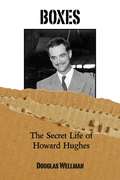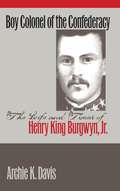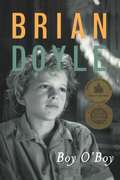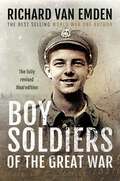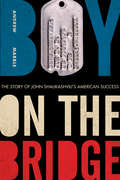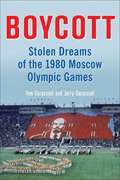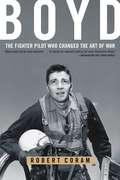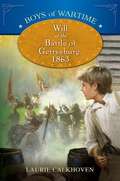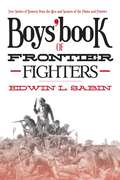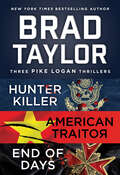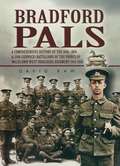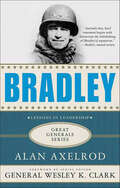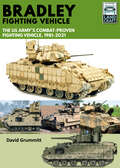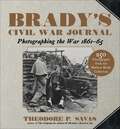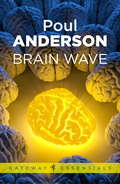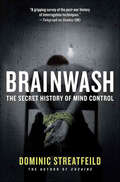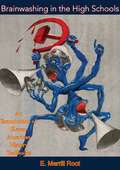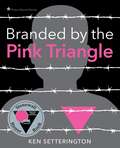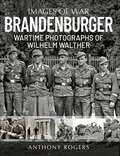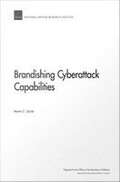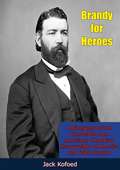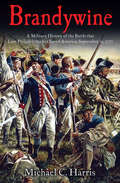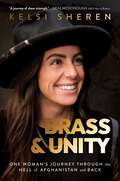- Table View
- List View
Boxes: The Secret Life of Howard Hughes
by Douglas WellmanEva McLelland was good at keeping secrets, and she had a big one. Sworn to secrecy for thirty-one years until the death of her husband, Eva was at last able to come forward and share a story that turns twentieth century history on its head and fills in puzzling blanks in the mysterious life of the tycoon Howard Hughes. How could Hughes appear to witnesses as an emaciated, long finger-nailed, mental incompetent, yet fly a jet aircraft four months later? How could a doctor describe him as looking like a "prisoner of war," when at the same time investment bankers, politicians, and diplomats who met him said he was articulate and well-groomed? The answer is a perfect example of the brilliance of the elusive billionaire. He simply found a mentally incompetent man to impersonate him, drawing the attention of the Internal Revenue Service and an army of lawyers who pursued him, while he conducted his business in peace from Panama with his new wife, Eva McLelland. Sound fantastic? It is. However, after seven years of research and verification, Eva's story produces the final pieces in the mysterious puzzle that was Howard Hughes.
Boy Colonel of the Confederacy
by Archie K. DavisHenry King Burgwyn, Jr. (1841-63), one of the youngest colonels in the Confederate Army, died at the age of twenty-one while leading the twenty-sixth North Carolina regiment into action at the battle of Gettysburg. In this sensitive biography, originally published by UNC Press in 1985, Archie Davis provides a revealing portrait of the young man's character and a striking example of a soldier who selflessly fulfilled his duty. Drawing on Burgwyn's own letters and diary, Davis also offers a fascinating glimpseinto North Carolina society during the antebellum period and the Civil War.
Boy O'Boy
by Brian DoyleGr. 6-8. In his latest novel, Doyle once again conjures up a tough neighborhood in Ottawa, Canada, during the waning days of World War II. In first-person, present-tense narration, young Martin O'Boy describes his neighborhood and the tension at home in a precise, highly observant voice that always seems genuine. The book takes a scary, somber turn when Martin is molested by a trusted church organist, Mr. George. When Martin discovers that his friend has also been molested, the boys exact a revenge of sorts. The scenes of abuse, described graphically from a child's viewpoint, are unsettling, and readers may be frustrated that even though the boys tell an adult, the organist isn't really punished. But Doyle's portrayal of Martin's naive bewilderment and gradual realization of Mr. George's true character are authentic, and the lively colloquial dialogue and period details create a rich historical portrait with a winning young character at its center. Todd Morning Copyright © American Library Association. All rights reserved
Boy Soldiers of the Great War
by Richard van EmdenAfter the outbreak of the Great War, boys as young as twelve were caught up in a national wave of patriotism and, in huge numbers, volunteered to serve their country. The press, recruiting offices and the Government all contributed to the enlistment of hundreds of thousands of under-age soldiers in both Britain and the Empire. On joining up, these lads falsified their ages, often aided by parents who believed their sons’ obvious youth would make overseas service unlikely. These boys frequently enlisted together, training for a year or more in the same battalions before they were sent abroad. Others joined up but were soon sent to units already fighting overseas and short of men: these lads might undergo as little as eight weeks’ training. Boys served in the bloodiest battles of the war, fighting at Ypres, the Somme and on Gallipoli. Many broke down under the strain and were returned home once parents supplied birth certificates proving their youth. Other lads fought on bravely and were even awarded medals for gallantry: Jack Pouchot won the Distinguished Conduct Medal aged just fifteen. Others became highly efficient officers, such as Acting Captain Philip Lister and Second Lieutenant Reginald Battersby, both of whom were commissioned at fifteen and fought in France. In this, the final update of his ground-breaking book, Richard van Emden reveals new hitherto unknown stories and adds many more unseen images. He also proves that far more boys enlisted in the British Army under-age than originally estimated, providing compelling evidence that as many as 400,000 served.
Boy on the Bridge: The Story of John Shalikashvili's American Success (American Warriors Series)
by Andrew Marble&“This isn&’t just a must-read for military buffs—it&’s a source of inspiration for every American and anyone who aspires to be one.&” —John Kerry, former US Secretary of State Born in Poland, John Shalikashvili (1936-2011) emigrated to the United States in 1952 and was drafted into the army as a private in 1958. He rose steadily through the ranks, serving in every level of unit command from platoon to division. In 1993, Shalikashvili was tapped by President Bill Clinton to replace General Colin Powell as chairman of the Joint Chiefs of Staff, becoming the first immigrant, first draftee, and first Officer Candidate School graduate to hold the position. This first-ever biography of Shalikashvili&’s riches-to-rags-and-back-to-riches story reveals how his distinctive background helped him become one of the United States&’s greatest military leaders. He exhibited a unique and unconventional leadership style—employing expertise, humility, straightforwardness, and empathy—that he adroitly used to resolve or prevent destructive conflict. His distinctive leadership style greatly benefited the United States, Europe, and beyond: as when he led the rescue of 500,000 Kurdish refugees in the first Gulf War&’s aftermath; when he represented Joint Chiefs chairman Colin Powell in helping secure loose nukes in the former Soviet republics; as he joined forces with fellow immigrant Madeleine Albright on the Partnership for Peace initiative and NATO enlargement program in the 1990s; and in retirement, when he helped end the military&’s &“Don&’t Ask, Don&’t Tell&” policy, thereby finally allowing gay servicemembers to serve openly without fear of dishonorable discharge. &“An engaging story of a remarkable man whose life story would be fascinating even without regard to his military career.&” —Foot Notes Blog
Boycott: Stolen Dreams of the 1980 Moscow Olympic Games
by Walter F. Mondale Jerry Caraccioli Tom CaraccioliWith a thorough exploration of the political climate of the time and the Soviet Union’s invasion of Afghanistan, this book describes the repercussions of Jimmy Carter’s American boycott of the 1980 Olympic Games in Moscow. Despite missing the games they had trained relentlessly to compete in, many U.S. athletes went on to achieve remarkable successes in sports and overcame the bitter disappointment of a once-in-a-lifetime opportunity dashed by geopolitics.
Boyd: The Fighter Pilot Who Changed the Art of War
by Robert CoramJohn Boyd may be the most remarkable unsung hero in all of American military history. Some remember him as the greatest U.S. fighter pilot ever -- the man who, in simulated air-to-air combat, defeated every challenger in less than forty seconds. Some recall him as the father of our country's most legendary fighter aircraft -- the F-15 and F-16. Still others think of Boyd as the most influential military theorist since Sun Tzu. They know only half the story. Boyd, more than any other person, saved fighter aviation from the predations of the Strategic Air Command. His manual of fighter tactics changed the way every air force in the world flies and fights. He discovered a physical theory that forever altered the way fighter planes were designed. Later in life, he developed a theory of military strategy that has been adopted throughout the world and even applied to business models for maximizing efficiency. And in one of the most startling and unknown stories of modern military history, the Air Force fighter pilot taught the U.S. Marine Corps how to fight war on the ground. His ideas led to America's swift and decisive victory in the Gulf War and foretold the terrorist attacks of September 11, 2001. On a personal level, Boyd rarely met a general he couldn't offend. He was loud, abrasive, and profane. A man of daring, ferocious passion and intractable stubbornness, he was that most American of heroes -- a rebel who cared not for his reputation or fortune but for his country. He was a true patriot, a man who made a career of challenging the shortsighted and self-serving Pentagon bureaucracy. America owes Boyd and his disciples -- the six men known as the "Acolytes" -- a great debt. Robert Coram finally brings to light the remarkable story of a man who polarized all who knew him, but who left a legacy that will influence the military -- and all of America -- for decades to come. ..
Boys and Girls in No Man's Land
by Susan FisherBoys and Girls in No Man's Land examines how the First World War entered the lives and imaginations of Canadian children. Drawing on educational materials, textbooks, adventure tales, plays, and Sunday-school papers, this study explores the role of children in the nation's war effort.Susan R. Fisher also considers how the representation of the war has changed in Canadian children's literature. During the war, the conflict was invariably presented as noble and thrilling, but recent Canadian children's books paint a very different picture. What once was regarded a morally uplifting struggle, rich in lessons of service and sacrifice, is now presented as pointless slaughter. This shift in tone and content reveals profound changes in Canadian attitudes not only towards the First World War but also towards patriotism, duty, and the shaping of the moral citizen.
Boys of Wartime: Will at the Battle of Gettysburg
by Laurie CalkhovenThe second exciting book in the series about boys swept up in the historical fight for freedom Twelve-year-old Will wants to be a drummer in the Union army, but he's stuck far from the fighting in his sleepy hometown of Gettysburg, Pennsylvania. Then the Union and Confederate armies meet in Gettysburg, and Will and his family are caught up in the ferocious fighting. From delivering important messages and helping captured slaves escape Confederate soldiers to even saving a young soldier's life, Will takes readers on a journey through one of the Civil War's most significant battles. And when the fighting is finally over, Will witnesses President Lincoln deliver his famous Gettysburg Address, and he knows firsthand the truth behind his words. .
Boys' Book of Frontier Fighters: True Stories of Bravery from the Men and Women of the Plains and Prairies
by Edwin L. SabinA classic of historical literature, Boys’ Book of Frontier Fighters is a thrilling collection of stories that cover the legacy of American fighters and their successes in defending themselves and their country. With stories spanning from the late 1600s to the 1800s, Sabin depicts in detail the willpower and bravery of the men and women who fought for America; from its founding as a country to the days of the Wild West. From the plains and prairies to the mountains and forests, enjoy tales of the people who fought to make this great country what it is today.With masterful prose, Edwin L. Sabin paints a picture of the early days of America and the warriors who took it upon themselves to defend this country. Their sacrifices are inspiring and exciting—and a dynamic part of our country’s history. Boys’ Book of Frontier Fighters shares a part of America’s past that should be read, celebrated, and never forgotten.
Brad Taylor's Pike Logan Collection: A Collection of Hunter Killer, American Traitor, and End of Days (Pike Logan)
by Brad TaylorThree pulse-pounding Pike Logan thrillers from New York Times bestselling author and former Special Forces officer Brad Taylor come together in one unique collection. Enjoy three bestselling, action-packed novels featuring Pike Logan and his Taskforce as they face down threats across the globe.HUNTER KILLER: After the Taskforce is targeted, Pike Logan tracks a group of highly-trained Russian assassins to Brazil, stopping at nothing to protect his team.AMERICAN TRAITOR: Pike Logan is on the desperate hunt for a man who is about to betray his country, and races to prevent a catastrophic conflict from consuming a whole region of the world.END OF DAYS: Pike Logan must stop a serial killer loose on the streets of Rome who is hell-bent on igniting a global disaster.
Bradford Pals: A Comprehensive History Of The 16th, 18th And 20th (service) Battalions Of The Prince Of Wales Own West Yorkshire Regiment 1914-1918
by David RawIn the early days of the First World War two volunteer Pals Battalions were raised in Bradford and this is their remarkable story. David Raw's account is based on memoirs, letters, diaries, contemporary newspaper reports, official records and archives, and it is illustrated with many maps and previously unpublished photographs. He recaptures the heroism and stoical humour displayed by the Bradford Pals in the face of often terrible experiences, but he also recounts the tragedy, pain, suffering and grief that was the dark side of war.
Bradley (Great Generals Series)
by Alan AxelrodA study of the life and influence of Omar Nelson Bradley, five-star US Army general, World War II leader, and military policy maker.Alan Axelrod applies his signature insight and compelling prose to the life, strategy and legacy of the general Bradley who remains the model for all commanders today as the man who revolutionized the National Guard, shaped the US Army’s focus on the individual soldier, and emphasized cooperation and coordination among the military services—a cornerstone of modern US military doctrine.Dubbed by the World War II press as “the GI General” because of his close identification with his men, Omar Bradley rose to command the US 12th Army Group in the European Campaign. By the spring of 1945, this group contained 1.3 million men—the largest exclusively American field command in US history.Mild mannered, General Bradley was a dedicated mentor, the creator of the Officer Candidate School system, and a methodical tactician who served through World War II. Then, as a five-star general, he lifted the Veterans Administration from corruption and inefficiency to a model government agency, served as US Army chief of staff, first chief of the Joint Chiefs of Staff, and head of NATO.
Bradley Fighting Vehicle: The US Army’s Combat-Proven Fighting Platform, 1981–2021 (LandCraft #9)
by David Grummitt8 pages of full color illustrations depicting 14 different vehicles.The Bradley Fighting Vehicle was developed in the 1970s to counter the new Infantry Fighting Vehicles of the Soviet Union and its Warsaw Pact allies. Designed to survive the imagined high-intensity, Nuclear, Biological and Chemical (NBC) battlefield of the Cold War, it became, alongside the M1 Abrams Main Battle Tank, the mainstay of US armoured forces during the 1980s. As the Cold War ended, however, it would go on to prove its worth on other battlefields. During the First Gulf War the Bradley would destroy more Iraqi AFVs than the Abrams, while during the 1990s it would prove itself an effective weapons system in the missions to Bosnia and Kosovo. During the 2003 invasion of the Iraq and the fighting that followed it confirmed its reputation as a versatile and deadly AFV. This volumes examines the development and service history of both the M2 Bradley Infantry Fighting Vehicle and the M3 Bradley Cavalry Fighting Vehicle. The various modifications and improvements over its long service history are described, as is the experience of the soldiers who have fought alongside and in it during the past three decades. The book also gives a full account of the wide range of kits and accessories available in all the popular scales and includes a modelling gallery covering the most important Bradley variants. Detailed color profiles provide both reference and inspiration for modellers and military enthusiasts alike.
Brady's Civil War Journal: Photographing the War 1861–65
by Theodore P. Savas&“My greatest aim has been to advance the art of photography and to make it what I think I have, a great and truthful medium of history.&” —Mathew Brady Mathew Brady and his team of assistants risked their lives to capture up-close images of the fury of the American Civil War and its aftermath. Brady actually got so close to the action during the First Battle of Bull Run that he only narrowly avoided capture. Brady's Civil War Journal chronicles the events of the war by showcasing a selection of Brady's moving, one-of-a-kind images and describing each in terms of its significance. Brady&’s team not only captured thousands of portraits of the combatants, the generals, the fighting men, the sick, the dead, and the dying, but also documented the infrastructure of the war machine itself, recording images of artillery pieces, the early railroads, and extraordinary engineering feats. The text by Theodore P. Savas, an expert on the Civil War, adds context to Brady's memorable photographs, creating an unrivaled visual account of the most costly conflict in American history as it unfolded. His unique record of the war gives modern readers a fascinating insight into the terrible maelstrom that shaped our nation.
Brain Wave (Gateway Essentials #6)
by Poul Anderson'Imagine that tomorrow neurotic response is so accelerated on this earth that an I.Q. of 500 is commonplace, a moron has the thinking capacity of yesterday's intellectual. Poul Anderson's detailedly plausible exploration of his theme makes for an unusually satisfying and stimulating book.'
Brainwash: The Secret History of Mind Control
by Dominic StreatfeildVivid and disturbing, Brainwash is essential insight into the modern practice of interrogation and torture. With access to formerly classified documentation and interviews from the CIA, U.S. Army, MI5, MI6, and British Intelligence Corps, Dominic Streatfeild traces the evolution of mind control from its origins in the Cold War to the height of today's war on terror. Behind the front lines of every war in the world, prisoners are forced to sit for interrogation: manipulated, coerced, and sometimes tortured--often without ever being touched. Brainwash is a history of the methods intended to destroy and reconstruct the minds of captives, to extract information, convert dissidents, and lead peaceful men to kill and be killed.
Brainwashing in the High Schools: An Examination of Eleven American History Textbooks
by E. Merrill RootOne third of the Americans taken prisoner in Korea succumbed to Communist brainwashing, according to U.S. Army studies, and assisted or collaborated with their captors.The Communist brainwashers recognized and took skillful advantage of the Americans’ ignorance and confusion concerning United States history, the free-enterprise economy, and the representative system of government.Placing the blame squarely on faulty presentation of history and social studies in the American schools, Professor Root, author of the controversial Collectivism on the Campus, examines eleven of the most widely used United States history textbooks. In these books he finds overwhelming evidence of hostility to traditional American principles, of left-wing partisanship and of class-warfare ideology.Professor Root presents the evidence in these pages, and upon it he bases the following conclusions:that American students are indoctrinated with a Marxian concept of United States history...that the present school generation is being conditioned to accept a socialistic and totalitarian way of life...that, as a consequence, resistance to Communist cold-war techniques is being broken down.Brainwashing in the High Schools quotes freely from the eleven textbooks to illustrate their “biased presentation” of American history from the time of the founding Fathers to the mid-twentieth century. The author makes a strong case and suggests radical changes in educational approach if we are to survive as a free nation. His book is essential reading for parents and for every teacher of history and social studies.
Brambleberry House: His Second-Chance Family\A Soldier's Secret
by Raeanne ThayneCome stay awhile at Brambleberry House, a place infused with acceptance, healing and heart-as only RaeAnne Thayne can imagine it. His Second-Chance Family Julia Blair spent many happy summers at Cannon Beach and fell hard for sweet local boy Will Garrett. Now the for-rent sign at Brambleberry House seems like a wonderful omen for widowed Julia and her young children. She craves the warmth she once felt in Brambleberry House-and in Will's arms. But before he can embrace his first love, he'll have to lay down the burden of the past and open his heart again. A Soldier's Secret Struggling to rebuild her business and her life, Anna Galvez knows she's fortunate to have inherited Brambleberry House as her rock-solid base. When she finds a handsome new tenant in injured army pilot Harry Maxwell, Anna thinks her luck-in love, at least-might be changing. Until the lieutenant's story begins to unravel...
Branded By The Pink Triangle
by Ken SetteringtonA history of the persecution of gay men by the Nazi regime during the Holocaust. When the Nazis came to power in Europe, the lives of homosexuals came to be ruled by fear as raids, arrests, prison sentences and expulsions became the daily reality. When the concentration camps were built, homosexuals were imprisoned along with Jews. The pink triangle, sewn onto prison uniforms, became the symbol of their persecution. This book combines historical research with first-person accounts and individual stories to bring this time to life for readers. From the first chapter, with its story of a young Jewish girl who was rescued from the depths of despair and starvation in the camps by a fellow prisoner who wore the pink triangle, to the last, entitled It Gets Better, which outlines the strides forward in gay rights made in the decades since the war, the feeling of bravery and perseverance in the face of inhuman cruelty shines through.
Brandenburger: Wartime Photographs of Wilhelm Walther (Images of War)
by Anthony RogersIn March 1940, Oberleutnant Wilhelm Walther transferred from Aufklärungs-Abteilung 5, an armored reconnaissance unit, to Bau-Lehr-Bataillon z.b.V. 800 – forerunner of what would soon be known as the ‘Brandenburger’. Two months later, he led a commando action in the Netherlands and became the first of his unit to be awarded the Ritterkreuz (Knight’s Cross). By May 1944, Walther was an Oberstleutnant and an experienced regimental commander in what had evolved as the Division ‘Brandenburg’. He would eventually join Obersturmbannführer Otto Skorzeny’s SS-Jagdverbände as Chief of Staff, before seeing out the last days of the war with the short-lived Schutzkorps Alpenland. More than 200 images, together with English captions, portray the life and times of this career officer, from the German annexation of the Sudetenland in 1938, to operations in Russia, Greece and the Balkans during 1941–44. In comparison with other units of the Second World War, relatively little has been published about Germany’s commando forces. This is hardly surprising, considering the paucity of source material available and the air of mystery and intrigue still surrounding this specialist formation. This unique collection of rare images was sourced from the photograph album of Wilhelm Walther and is sure to appeal to all with an interest in the war in the West and on the Eastern Front, as well as to militaria collectors, modelers and re-enactment groups.
Brandishing Cyberattack Capabilities
by Martin C. LibickiDeterrence is possible only when others have at least a good idea of possible U.S. military reprisals, but cyberattack capabilities resist such demonstration. This report explores ways they can be and under what circumstances, then goes on to examine the difficulties and the drawbacks. Such "brandishing" is no panacea and could even backfire if misinterpreted. Its success also relies on the strength of other elements of the deterrence posture.
Brandy for Heroes: A Biography of the Honorable John Morrissey, Champion Heavyweight of America and State Senator
by Jack KofoedJohn Morrissey (1831-1878), also known as Old Smoke, was an Irish-born American who became a prominent figure of the 1850’s. Raised in New York State, Morrissey moved to San Francisco at the time of the California Gold Rush in the early 1850’s. There, he took up bare-knuckle boxing and, on his return to New York, challenged and defeated “Yankee Sullivan”, then recognized as the American boxing champion. Following his boxing career, Morrissey later became a professional gambler, owning gambling houses in New York City in the 1850s and 1860s. He then became a U.S. Congressman between 1867-1871, backed by Tammany Hall, but later fell out with the political machine and became an Anti-Tammany Democratic State Senator for New York between 1876-1878.Brandy For Heroes, first published in 1938, is sportswriter Jack Kofoed’s biography of John Morrissey. Kofoed draws on his fast-paced journalistic skills and takes the reader on an exciting journey of Old Smoke’s life: from his early years in the slums of Troy, New York, to his prize fights in California, defeating the likes of Hyer, Sullivan and Heenan, and concluding with Morrissey’s political career back in his home state of New York as Senator during the 1850’s-1860’s.
Brandywine: A Military History of the Battle that Lost Philadelphia but Saved America, September 11, 1777
by Michael C. Harris"Brandywine Creek calmly meanders through the Pennsylvania countryside today, but on September 11, 1777, it served as the scenic backdrop for the largest battle of the American Revolution, one that encompassed more troops over more land than any combat fought on American soil until the Civil War. Long overshadowed by the stunning American victory at Saratoga, the complex British campaign that defeated George Washingtons colonial army and led to the capture of the capital city of Philadelphia was one of the most important military events of the war. Michael C. Harriss impressive Brandywine: A Military History of the Battle that Lost Philadelphia but Saved America, September 11, 1777, is the first full-length study of this pivotal engagement in many years.General Sir William Howe launched his campaign in late July 1777, when he loaded his army of 16,500 British and Hessian soldiers aboard a 265-ship armada in New York and set sail. Six difficult weeks later Howes expedition landed near Elkton, Maryland, and moved north into Pennsylvania. Washingtons rebel army harassed Howes men at several locations including a minor but violent skirmish at Coochs Bridge in Delaware on September 3. Another week of hit-and-run tactics followed until Howe was within three miles of Chadss Ford on Brandywine Creek, behind which Washington had posted his army in strategic blocking positions along a six-mile front. The young colonial capital of Philadelphia was just 25 miles farther east.Obscured by darkness and a heavy morning fog, General Howe initiated his plan of attack at 5:00 a.m. on September 11, pushing against the American center at Chadss Ford with part of his army while the bulk of his command swung around Washingtons exposed right flank to deliver his coup de main, destroy the colonials, and march on Philadelphia. Warned of Howes flanking attack just in time, American generals turned their divisions to face the threat. The bitter fighting on Birmingham Hill drove the Americans from the field, but their heroic defensive stand saved Washingtons army from destruction and proved that the nascent Continental foot soldiers could stand toe-to-toe with their foe. Although fighting would follow, Philadelphia fell to Howes legions on September 26.Harriss Brandywine is the first complete study to merge the strategic, political, and tactical history of this complex operation and important set-piece battle into a single compelling account. More than a decade in the making, his sweeping prose relies almost exclusively upon original archival research and his personal knowledge of the terrain. Enhanced with original maps, illustrations, and modern photos, and told largely through the words of those who fought there, Brandywine will take its place as one of the most important military studies of the American Revolution ever written."
Brass & Unity: One Woman's Journey Through the Hell of Afghanistan and Back
by Kelsi SherenThis is the story of a woman who witnessed the worst in the War in Afghanistan, was confronted by demons of post-traumatic stress, and fought for her life to become stronger than ever.As seen on: · JOCKO Podcast Episode #381 · The Dr. Gabrielle Lyon Show &“Post Traumatic Growth and Resiliency" · Lex Fridman Podcast Episode #230 Fresh out of high school, Kelsi Sheren, a diminutive nineteen-year-old woman, sought to join the military to help liberate those oppressed by the Taliban in Afghanistan. While she was often the smallest person in basic training, she proved she had the biggest heart and often the most energy. She made it to Afghanistan and joined a British military unit for house-to-house insurgent patrol. What she saw there was unimaginable death and destruction—including the killing of a brother-in-arms. Devastated, Kelsi was sent home to get her head straight, but even therapy and medication couldn&’t clear her mind—or let her sleep. When two others who served with her later took their own lives, she feared that was the only way out. Clinging to life and the love of her husband and child, she knew she wasn&’t ready to give in. Finding respite in a jewelry business that utilized spent shell casings, and with the help of innovative grief therapy, Kelsi not only survived but continues to thrive—and works tirelessly to spread the word and help others.
